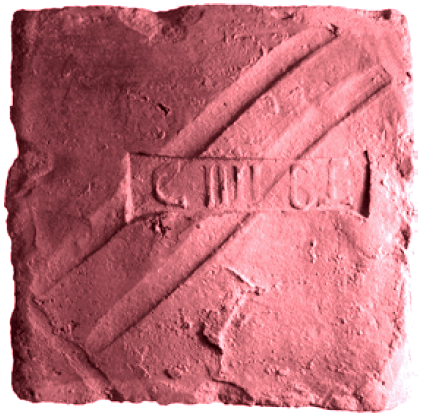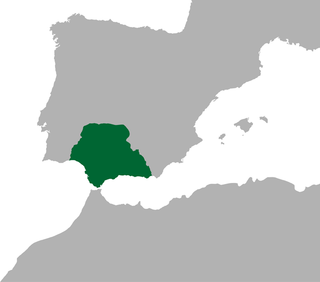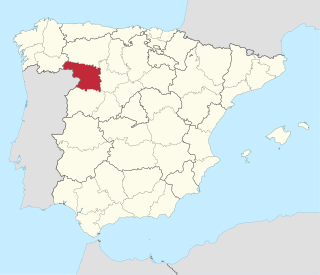
Zamora is a province of western Spain, in the western part of the autonomous community of Castile and León. It is bordered by the provinces of Ourense, León, Valladolid, and Salamanca, and by Portugal.

Hispania Tarraconensis was one of three Roman provinces in Hispania. It encompassed much of the Mediterranean coast of modern Spain along with the central plateau. Southern Spain, the region now called Andalusia, was the province of Hispania Baetica. On the Atlantic west lay the province of Lusitania, partially coincident with modern-day Portugal.
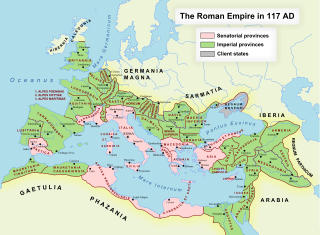
A senatorial province was a Roman province during the Principate where the Roman Senate had the right to appoint the governor (proconsul). These provinces were away from the outer borders of the Roman Empire and free from the likelihood of rebellion, and so had few, if any, legions stationed in them. Governors of Senatorial provinces only had civil powers. They were often along the Mediterranean Sea.

Gallaecia, also known as Hispania Gallaecia, was the name of a Roman province in the north-west of Hispania, approximately present-day Galicia, northern Portugal, Asturias and Leon and the later Suebic Kingdom of Gallaecia. The Roman cities included the port Cale (Porto), the governing centers Bracara Augusta (Braga), Lucus Augusti (Lugo) and Asturica Augusta (Astorga) and their administrative areas Conventus bracarensis, Conventus lucensis and Conventus asturicensis.
The Coelerni were an ancient Celtic tribe of Gallaecia in Hispania, part of Calaician or Gallaeci people, living in what was to become the Roman Province of Hispania Citerior, convent of Bracara Augusta, in what is now the southern part of the province of Ourense.
Liuvigild, Leuvigild, Leovigild, or Leovigildo, was a Visigothic King of Hispania and Septimania from 568 to April 21, 586. Known for his Codex Revisus or Code of Leovigild, a unifying law allowing equal rights between the Visigothic and Hispano-Roman population, his kingdom covered modern Portugal and most of modern Spain down to Toledo. He was born circa 525.

Hispania Citerior was a Roman Province in Hispania during the Roman Republic. It was on the eastern coast of Iberia down to the town of Cartago Nova, today's Cartagena in the autonomous community of Murcia, Spain. It roughly covered today's Spanish autonomous communities of Catalonia and Valencia. Further south there was the Roman Province of Hispania Ulterior, being further away from Rome. The two provinces were formed in 197 BC, four years after the end of the Second Punic War. During this war Scipio Africanus defeated the Carthaginians at the Battle of Ilipa in 206 BC. This led to the Romans taking over the Carthaginian possessions in southern Spain and on the east coast up to the River Ebro. Several governors of Hispania Citerior commanded wars against the Celtiberians who lived to the west of this province. In the late first century BC Augustus reorganised the Roman provinces in Hispania and Hispania Citerior was replaced by the larger province of Hispania Tarraconensis, which included the territories the Romans had conquered in central, northern and north-western Hispania. Augustus also renamed Hispania Ulterior Hispania Baetica and created a third province, Hispania Lusitania.
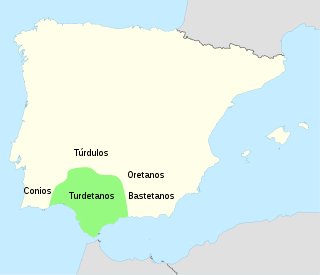
The Turdetani were an ancient pre-Roman peoples of the Iberian Peninsula, living in the valley of the Guadalquivir, in what was to become the Roman Province of Hispania Baetica. Strabo considers them to have been the successors to the people of Tartessos and to have spoken a language closely related to the Tartessian language.

The Contestani were an ancient Iberian (Pre-Roman) people of the Iberian peninsula. They are believed to have spoken the Iberian language.

Legio septima Gemina was a legion of the Imperial Roman army. It was founded in AD 68 in Hispania by the general Galba to take part in his rebellion against the emperor Nero. "Gemina" means the legion was dedicated to the legendary twin founders of Rome, Romulus and Remus, who were suckled by a she-wolf. The legion was deployed in the city called Legio in AD 74 and remained in Hispania to the end of the 4th century.

Hispania Balearica was a Roman province encompassing the Balearic Islands off the east coast of modern Spain. Formerly a part of Hispania Tarraconensis, Balearica gained its autonomy due to its geographic separation and economic independence from the mainland.

Huéscar is a municipality of the province of Granada, Spain.
Hispania, the ancient Roman name for the Iberian Peninsula, may mean:

Hispania Carthaginensis was a Roman province segregated from Hispania Tarraconensis in the new division of Hispania by emperor Diocletian in 298.
Publius Aelius Hadrianus Marullinus (c.31–c.91), also known as Aelius Hadrianus Marullinus or Aelius Marullinus was a Spanish Roman Senator of Praetorian rank that lived during the Roman Empire in the 1st century.
This section of the timeline of Hispania concerns Spanish and Portuguese history events from the Carthaginian conquests to before the barbarian invasions.

The Battle of the Nervasos Mountains occurred in the year 419 and was fought between a coalition of Suebi, led by King Hermeric together with allied Roman Imperial forces stationed in the Province of Hispania, against the combined forces of the Vandals and Alans who were led by their King Gunderic. This battle occurred in the context of a contemporary Germanic invasion of the Iberian Peninsula. The battle took place in what is today the Province of León, Spain, and resulted in a Roman/Suebian Victory.

